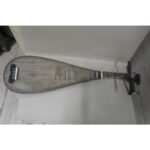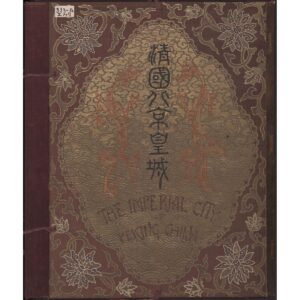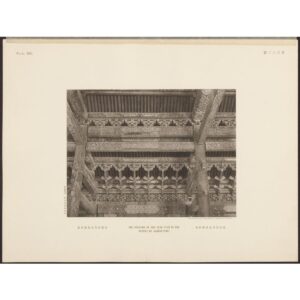Pigeon whistle
A gourd-shaped pigeon whistle with three pairs of sub-whistles. The pigeon whistle, known in China as geling 鴿鈴 or geshao 鴿哨, is a small musical instrument belonging to the Aeolian group of musical instruments. It is attached to the tail of a pigeon with the help of a spindle, so that it emits a sound when the bird flies. The whistle is usually made of light materials such as gourd and bamboo, and is lacquered. In many cases, manufacturers ornament them with engraved patterns and ivory decorations. In China, the pigeon whistle has been used since at least the beginning of the Qing Dynasty (1644–1912). The earliest mentions of pigeon whistles in literature date back to the Northern Song period (960–1127). They were also typical of other Asian areas such as Indonesia and Japan. In the past, the sound of the pigeon whistles, also known as “heavenly music”, was a key feature of the Beijing soundscape. Nowadays, it is increasingly rarer, although ... more
A gourd-shaped pigeon whistle with three pairs of sub-whistles. The pigeon whistle, known in China as geling 鴿鈴 or geshao 鴿哨, is a small musical instrument belonging to the Aeolian group of musical instruments. It is attached to the tail of a pigeon with the help of a spindle, so that it emits a sound when the bird flies. The whistle is usually made of light materials such as gourd and bamboo, and is lacquered. In many cases, manufacturers ornament them with engraved patterns and ivory decorations. In China, the pigeon whistle has been used since at least the beginning of the Qing Dynasty (1644–1912). The earliest mentions of pigeon whistles in literature date back to the Northern Song period (960–1127). They were also typical of other Asian areas such as Indonesia and Japan. In the past, the sound of the pigeon whistles, also known as “heavenly music”, was a key feature of the Beijing soundscape. Nowadays, it is increasingly rarer, although it is experiencing many modern revivals.
Skušek’s collection of pigeon whistles includes three different types of instruments, distinguished by their shape: gourd, tube, and combined. This gourd-shaped pigeon whistle, with three pairs of sub-whistles, has a cap and body made of bamboo; a narrow opening at the base of the whistle shows where the lower plate (which is usually made of bamboo or ivory and is used to attach the whistle to the pigeon) would have been fixed. Near the opening, the whistle features a shallow cut that could be the flute maker’s logo, from its position and the nature of the carving, but which is unfortunately unrecognisable. (KH)






































Do you have a comment or additional information about the subject?